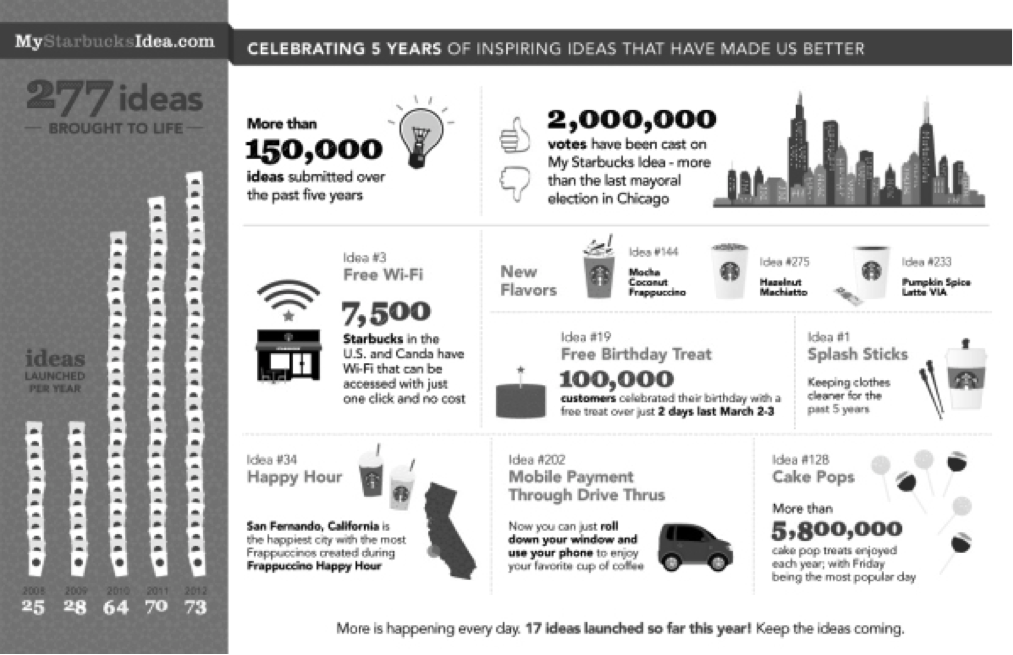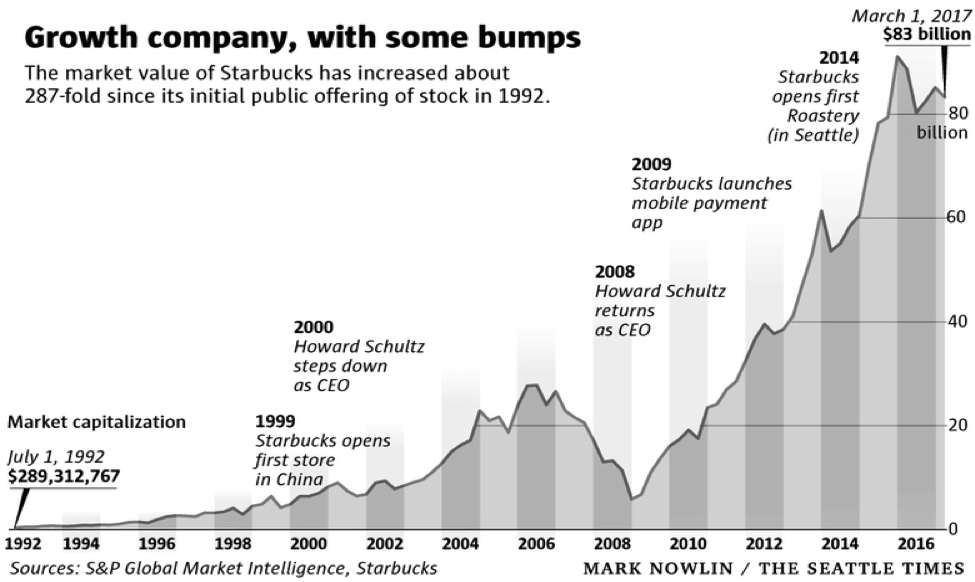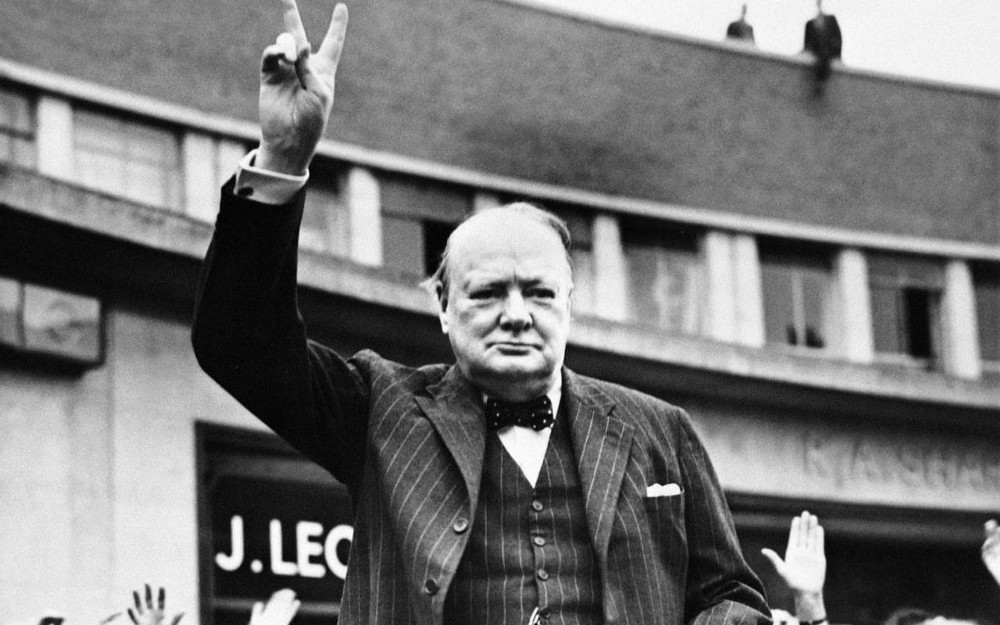Moments of truth for CEOs: Gearing up for post COVID-19 scenario

The American CEOs of the 1940s faced a similar situation, surviving and thriving in a crisis. At the outset of World War II, the businesses experienced a series of losses- dropping customers (due to rationing and shutdowns), shrinking workforce (who were redeployed to fight) and a loss of suppliers and distributors (which were redirected by the government). And what makes the crisis much worse was the ongoing 12th year of the Great Depression. No one knew when the war would end. No one knew when life and business would get back to ‘normal’.
Fast forward to 2020, uncertainty is looming, a vaccine is yet to be invented, and no one knows when life and business would get back to ‘normal’.
In both the crises, what really kept CEOs awake at night was how to get business to bounce back?
While the World War II was a crisis, it was also a time of extraordinary transformation: General Motors shifted almost 90 percent of its divisions to produce war equipment. Hershey shifted from candy to D rations, ramping up production from 700,000 bars to 24 million bars per week. Before the war, it took 200,000 hours of labor to build a plane; by the end, Ford had it down to 18,000 hours. The Army asked Coca-Cola to open 10 bottling plants abroad to serve American soldiers—its leadership team responded by opening 64 bottling plants, serving 5 billion bottles of Coke to GIs. The number of women working in the defense industry skyrocketed from barely 80,000 in June 1942 to more than 3 million by the war’s end.
 While the Coca-Cola Company was busy boosting the morale of American fighting forces, they were simultaneously laying the groundwork for becoming an international symbol of refreshment and solidarity.
While the Coca-Cola Company was busy boosting the morale of American fighting forces, they were simultaneously laying the groundwork for becoming an international symbol of refreshment and solidarity.
#1: Moment of Truth: Reimagining business model and adapting to the needs
Word War II was a time when entire US industries started reconfiguring their businesses and responding to a new reality. As a result, many of these companies emerged stronger and dominated global industries for decades after the war. Those that failed to adapt fell by the wayside.
COVID-19 is a time, which cannot be lost. Businesses who will step up to acknowledge the challenges, realize the new normal and reconfigure their offerings according to the current needs of the business will be more ready to confront the challenges of the new normal.
Restaurants and Cafes’ are accepting orders online, events industries are hosting more and more events virtually, and education and learning are increasingly directed on virtual platforms.
So how do you remodel and reconfigure your products according to the business needs?
- Audit your customer experience: Acknowledge the gaps in your current experience plan and create a quick plan based on your audit findings.
- Roadmap the need for your products and services, now and next: Use Personas and Journeys to define how this plays out during the shutdown and immediately after. Determine where reassurance will be needed that service is reliable and safe. Establish how you will stay in contact with customers who may become more irregular for the time being. Explore where demand might surge.
- Identify new opportunities as normal life resumes: Explore and define how you can expand your core products, services, and experiences to fit with the new normal.
So now, while you have identified the new opportunities, the other moment of truth for business leaders is revenue!
#2. Moment of Truth: Driving revenues by reigniting connection with customers
The recession of 2008 is by far the most severe recession that impacted the entire world. The wave of bad economic news eroded confidence and buying power, driving consumers to adjust their behavior in fundamental and perhaps permanent ways.
Take this case study of Starbucks.
On January 8, 2008, Howard D. Schultz returned as CEO of Starbucks after a gap of eight years, replacing Jim Donald. Upon coming back, he found that apart from the worsening economic condition in the US, the company's rapid expansion had distracted it from making its cafes an inviting place with new products. In addition, Starbucks also faced competition from McDonald's, which had, in 2008, started setting up coffee bars that sold espresso.
The previous leadership had blamed the economy and the higher cost of dairy products for the slump in business. They had also stated this as a reason to hike prices.
However, Schultz took an entirely different view of the situation. Schultz shot off a letter to the employees on the day he took office once again as CEO. He said, "The company must shift its focus away from bureaucracy and back to customers." He made his objective very clear: "Reigniting the emotional attachment with customers.
In March 2008, "My Starbucks Idea" was rolled out for customers to exchange ideas with each other and directly with the company. As part of this, customers were able to give opinions on everything such as products, services, layout, advertising, corporate social responsibility, in-store music and so on. About 1.3 million users on social media shared more than 93,000 ideas, and page views per month rose to 5.5 million. And this is how Starbucks pulled itself out of the 2008 meltdown.

Putting the Starbucks case study in the COVID-19 scenario:
According to McKinsey, what’s important is to identify the primary sources of revenue and, on that basis, make the “now or never” moves that need to happen before the recovery fully starts. This may include:
- Launching targeted campaigns to win back loyal customers
- Developing customer experiences focused on increased health and safety
- Adjusting pricing and promotions based on new data
- Reallocating spending to proven growth sources
- Reskilling the sales force to support remote selling
- Creating flexible payment terms
- Digitizing sales channels, and
- Automating processes to free up sales representatives to sell more
Here is how Starbucks shares skyrocketed when they engaged their consumers:

Customer-centricity and relooking at business offerings are one side of the coin to drive business continuity. However, among other things, COVID-19 has also forced certain employers with cash flow emergencies to consider furloughs, reductions in work schedules/pay, and other cost-saving measures.
In times of pandemic, the cost-cutting reflex is understandable. Leaders are obligated to make responsible decisions to keep their companies afloat. However, is layoff an only option to save costs and maintain business continuity?
#3: Moment of Truth: Accelerated cost-cutting - Is layoff the only answer?
 Unemployed line up outside a soup kitchen in New York during the Great Depression, 1930
Unemployed line up outside a soup kitchen in New York during the Great Depression, 1930
The Great Depression’s toll on the economy, employment and the stock market was ultimately much worse than the damage so far inflicted by COVID-19. The Great Depression caused an exceptionally high level of joblessness. Between 1928 and 1932, the unemployment rate soared from 3.2% to 24.9% – the highest rate in American history, according to the balance.
Goldman Sachs predicted that unemployment in the U.S. would spike to 15 percent in the second quarter of 2020, according to CNBC. However, The St. Louis Federal Reserve estimated in March 2020 that the unemployment rate could hit a whopping 32 percent amid 47 million layoffs, according to CNBC.
According to a recent study by PwC, the move to cut costs intensified with 32 percent of CFO's expecting layoffs in May. Protecting liquidity and cash is a paramount concern for businesses today.
Researcher Wayne F. Cascio from the University of Colorado's business school researched that cutting jobs isn't the answer. He notes that massive cuts lead to fewer salespeople, less research and development, and a loss of high-producing individuals. The result is lower sales, reduced product innovation, and decreased productivity due to low morale. Cascio's research also points to increased costs for companies when they reduce the workforce. He mentioned IBM had to spend $700 million in 2008, just for employment restructuring.
Aside from losing talent and increasing some costs, there are implications for a company's stock price as well. According to a research by Cornell University it was found that the stock market may respond positively to companies that announce extensive restructuring, and may briefly lift the company's share price. But in the long term, the majority of companies that have instituted forced layoffs did not realize improved financial performance either on the balance sheet or on the stock exchange.
Some of the steps that organizations around the world are taking to reduce employee costs are:
1. Consider a flexible compensations system:
Tap on the monthly variable component (MVC) to adjust wages depending on business performance. Employers should be clear about returning the amount cut during the recession through future pay rises or when the business recovers. Similarly, the MVC system needs to be discussed with existing employee unions.
2. Get the leadership pay cut to adjust low-wage employees:
Any wage adjustments may hit low-wage employees harder. Special consideration needs to be given for employees especially if they’re frontline workers. One way to soften the blow is to use a ‘graduated’ approach: implement deeper cuts for leaders and higher-wage staff first to save on total wage costs.
 Leaders who took a pay cut: From left to right: Marriott CEO Arne Sorenson, United (UAL) CEO Oscar Munoz, New Zealand Prime Minister, Jacinda Ardern, and Disney Executive Chairman, Bob Iger.
Leaders who took a pay cut: From left to right: Marriott CEO Arne Sorenson, United (UAL) CEO Oscar Munoz, New Zealand Prime Minister, Jacinda Ardern, and Disney Executive Chairman, Bob Iger.
3. Freeze hiring plans:
According to a recent People Matters COVID-19 Impact & Measurements survey, 73 percent of the participating organizations plan to cut cost by freezing their hiring activities.
This also calls for the opportunity to plan for better workforce utilization. Take this case of one of India’s largest fabric and fashion retailers Raymond. Raymond developed a three-pillar model to enable an end-to-end experience for its employees. The ‘Performance’ lever aimed at setting clear targets to encourage employees to be productive. Within this lever, leaders identified various projects that can be planned and delivered from working remotely. This also included defining and clarifying roles, performance expectations, and goals.
The future is agile. Roles will get redundant, new roles will emerge, and hence employees need to make a transition into different roles as the need arises.
4. Keep a check on spending:
Review and target cutting on non-essential discretionary spending. Non-essential spending includes any spending that can be safely curtailed or eliminated without damaging the bottom line, team morale, or professional relationships with customers or suppliers. Look for these expenditures in:
- Research and development.
- Office expenses (including services, supplies for the company break room, etc.).
- Repairs and maintenance (although care should be used here, as malfunctioning essential equipment could create a much larger expense than the bill for routine maintenance). This is especially important for reasons of health and safety as well as an expense during a pandemic.
- Business credit cards. If your team uses corporate cards or reimburses expenses regularly, revise your policies to trim or eliminate credit card spending as soon as possible.
- Training, conferences, team-building events, etc.
- Shift promotions and increments to next quarter or to a time when the business looks good:
In our survey, People Matters COVID-19 Survey- Impact and Measurement, 58 percent organizations shared that they have put a hold on the yearly increments and promotions until Q1.
While it may impact an employees’ morale businesses must be clear on offering increments and promotions once the business gets settled.
However, a puzzle that still remains unsolved and keeping organizations to oscillate on various plans is managing the workforce and the new normal of work.
#4. Moment of Truth: Managing the new normal of work and workforce
 Will office spaces be no longer a necessity?
Will office spaces be no longer a necessity?
The spread of COVID-19 is changing how we live and work in ways we would not have thought possible even two weeks ago. Today’s new normal for businesses includes work-from-home difficulties, many simultaneously sick workers, uncertain compliance obligations, layoffs, roles and jobs getting redundant.
The People Matters COVID-19: Impact and measurements survey identified three areas that will impact the work and people in businesses:
1. Remote working:
COVID-19 has forced companies to switch to remote working very quickly. Although this migration went reasonably well in a short period of time, there are a few pitfalls that business managers need to be aware of:
a) Balancing the professional and personal lives of an employee
Through the immediate introduction of homeworking, employees experience a blurring of the boundary between work and private life. Early adopters show that this does not necessarily impact productivity, but it does pose a threat to collaboration and communication if left unattended. Actively investing in your employees’ well being, therefore, is an extra point of attention.
b) Infrastructure for remote working:
Where companies used to manage everything centrally, they now have to organize everything remotely. This requires in-depth security changes and structural adjustments. This should not be taken lightly, as cybercrime has increased in the EU during the outbreak. It also requires the commitment of each and every employee to securely navigate his or her work tools.
c) The transition can strain professional connections:
According to a survey by Slack, nearly half of new remote workers say that working from home has negatively affected their sense of belonging. But experienced remote workers show us that connectedness can improve over time.
To be successful in the long term, a structured approach is needed, together with a significant investment to change corporate culture.
2. Managing Layoffs

Due to the coronavirus impact, Bird's leadership team and board of directors felt the need to let go 30 percent of its staff to 'extend its runway'. 406 employees received a vague invitation to a Zoom conference call on "COVID-19 Update".
When the call started at 10:30 a.m., employees were greeted with a 5-minute silence and a slide saying “COVID-19”. Some thought they were experiencing technical difficulties and left the call. They were unable to get back in.
They missed what goes down as one of the coldest, most unsympathetic company announcements ever. Here’s the recording of the now-infamous conference call, posted by dot.LA.
Here are some considerations before you end up repeating what Bird did.
- Companies should write why an employee is being let go in their termination notice, i.e. layoffs due to COVID-19
- Employers should offer to draft a letter of recommendation for employees
- Businesses can file a mass claim for unemployment, if permitted by their state, which should help workers receive unemployment benefits faster
- Lead with empathy when laying off their workers. Employees will remember how they’re treated during this time. If they’re treated poorly, they’re more than likely going to speak poorly to their network and through online reviews about the company and their experience.
- Do not make any promises you can’t keep. Offer all the help you can, but make sure you have the time and resources to deliver on what you promise, to avoid further disappointment down the road.
3. The rise of the digital workforce:
If "necessity is the mother of invention," coronavirus (COVID-19) forced many around the world to rethink our work. In response to travel bans, remote work, and recommendations to not gather in large groups and keep our distance from fellow humans to limit the spread of the virus, many people turned to digital tools to keep some semblance of normality. It is been imperative to digitally transform our places of work to be able to operate effectively. Those companies able to use technology well to keep going and rethink their business model for the future by fast-tracking digital transformation will be ones ahead of their competition.
Some of the key guidelines to move to fully operational digital workplaces:
- Adopt technology that equips employees to work anywhere, at any time
- Deploy social collaboration tools to allow employees to contribute around the world through solutions, such as file sharing, team rooms, chat and video
- Provide employees with cloud workspaces to access critical applications and data securely and remotely
- Transform to digital workplace services with contact-center services
- Keep mission-critical systems running in a hybrid cloud environment with limited on-site technical resources.
As we plan to restart life post lockdown, digital workforce and design will be essential components and play a vital part in success, growth, and innovative outlook. We must look at taking measures to move towards a more fluid, networked environment that empowers each worker to connect with the people and resources they need to deliver new value and connected experiences.
Last but not the least, as Winston Churchill said:
 “Never, never, never, never–in nothing great or small, large or petty–never give up.”
“Never, never, never, never–in nothing great or small, large or petty–never give up.”
Taking a cue from this quote, it is evident that leaders have to manifest hope and resilience in these testing times. How will COVID-19 change the world? Right now, the picture looks unclear and it would be difficult to know if a V-shaped recovery is predicted soon or whether there will be no return to normal. The world will change, as it does after any social, geopolitical, or economic event of this magnitude. It is said that tough times separate the mediocre leaders from the ones who are truly good. And it is these moments of truth and how leaders face them in real-time that will make way for a better tomorrow once the crisis is over.

















